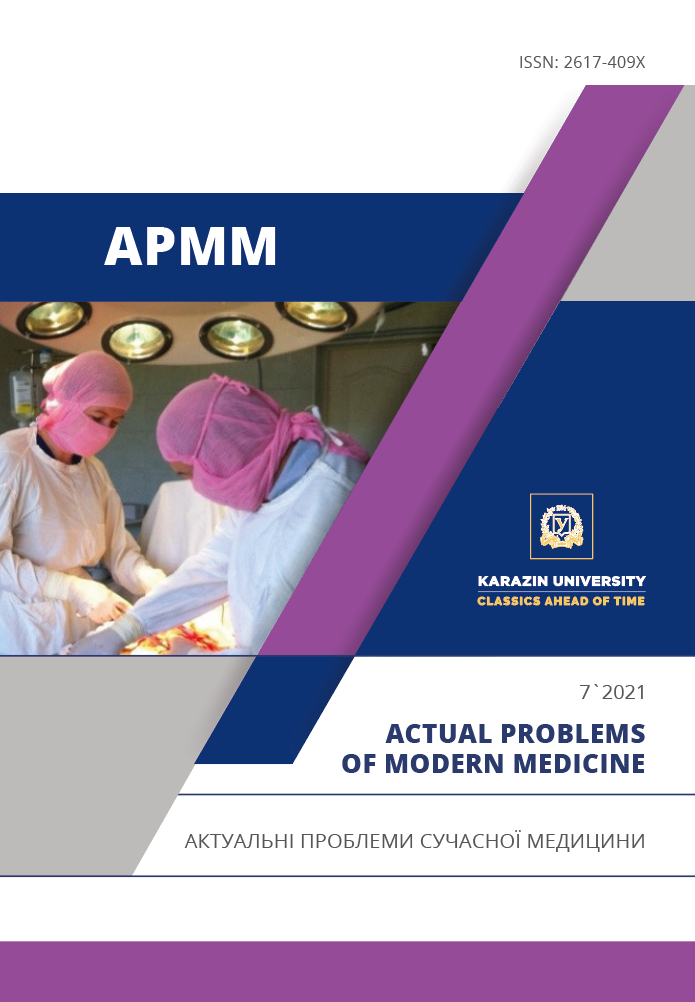Level of the exercise tolerance in healthy adolescents
Abstract
Recently, much attention is paid to a comprehensive assessment of the adaptive capacity of the body, namely the respiratory and cardiovascular systems. Exercise tests are used for this purpose. Exercise tolerance reflects the patient's degree of physical fitness and his ability to tolerance to the imposed physical activity. This indicator is one of the main characteristics of the cardiovascular system. To assess the tolerance to exercise, recently used to estimate the walking distance, which allows to determine the adaptive capacity of the body in response to minimal exercise. Currently, the 6-minute walking test is widely used in cardiology and pulmonology in adults, who have correlated the walking distance with indicators of their quality of life and with the functional class of heart failure. Also in adults, the walking distance in 6 minutes is used as a good predictor of death and disability in various cardiopulmonary diseases. In recent years, this test is increasingly used in pediatrics. This test has a number of advantages: it is easy to perform, reflects daily activity, does not require special equipment and a separate room, which makes it accessible and inexpensive to use. The aim of the study was to examine the literature data on a 6-minute walking test in healthy adolescents and compare them with the performance of Ukrainian peers. Materials and methods. 11 publications were analyzed, where the results of the six-minute walking test in children from different countries of the world and different age categories are presented. This test was performed on 46 healthy adolescents and analyzed depending on gender, age and body mass index. Result. A study of the literature showed that the 6-minute walking test is also used in paediatrics. Its data vary in children around the world and depend on weight, sex and age. The high enough value of the 6-minute walking test to assess exercise tolerance is emphasized. Conclusions. The indicators of the six-minute walking test in Ukrainian adolescents correspond to the world average, correlate with age, does not depend on gender and can be used to compare with the results of sick children.
Downloads
References
Holovko T, Shevchenko N, Bogmat L, Rakovskaya L, Evdokimova T. Adaptaczionny`e vozmozhnosti serdechno-sosudistoj sistemy` podrostkov s nevospalitel`noj patologiej miokarda s uchetom morfofunkczional`ny`kh pokazatelej serdcza. Mediczinskie novosti Gruzii 2019; 11 (296): 42-48. https://pubmed.ncbi.nlm.nih.gov/31889703/ (In Russ.)
Shevchenko N, Bogmat L, Holovko T, Dem`yanenko M. Adaptaczi`jni` mozhlivosti` serczevo-sudinnoyi sistemi v di`tej i`z revmatichnimi zakhvoryuvannyami ta komorbi`dnimi stanami. Patologi`ya. 2019; 16(1): 99-105. https://doi.org/10.14739/2310-1237 (In Ukr.)
Tupikina A, Plotnikova I, Kovalev I, Svinczova L, Dzhaffarova O, Yanulevich O, Krivoshhekov E. Opredelenie tolerantnosti k fizicheskoj nagruzke u zdorovy`kh detej s ispol`zovanie modificzirovannogo Garvardskogo step-testa. Sibirskij mediczinskij zhurnal. 2015; 30(4): 36-39. https://doi.org/10.1371/journal.pone.0205792 (In Russ.)
Vandoni M, Correale L, Puci M. et all. Six minute walk distance and reference values in healthy Italian children: A cross-sectional study. PLoS ONE. 2018. 13(10): https://doi.org/10.1371/journal.pone.0205792
Balke B. A simple field test for the assessment of physical fitness. Rep 63-6. Rep Civ Aeromed Res Inst US 1963; 53: 1–8. https://pubmed.ncbi.nlm.nih.gov/14131272/
Cooper K. A means of assessing maximal oxygen intake: correlation between field and treadmill testing. JAMA. 1968; 203(3): 201-204. https://doi.org/10.1001/jama.1968.03140030033008
Rasekaba T, Lee A, Naughton M, Williams T, Holland A. The six-minute walk test: a useful metric for the cardiopulmonary patient. Intern Medical Journal. 2009. 39(8): 495-501. https://doi.org/10.1111/j.1445-5994.2008.01880.x
Butland R, Pang J, Gross E, Woodcock A, Geddes D. Two-, six- and 12-minute walking tests in respiratory disease. BMJ. 1982; 284: 1607–1608. https://doi.org/10.1136/bmj.284.6329.1607
Enright P. The six-minute walk test. Respir Care. 2003; 48 (8): 783–785. https://pubmed.ncbi.nlm.nih.gov/12890299/
Brown C, Wise R. Field tests of exercise in COPD: the six-minute walk test and the shuttle walk test. COPD. 2007; 4(3): 217-23. https://doi.org/10.1080/15412550701480125
Klepper S, Muir N. Reference values on the 6-minute walk test for children living in the United States. Pediatr Phys Ther. 2011; 23: 32–40. https://doi.org/10.1097/pep.0b013e3182095e44
Lívia Barboza de Andrade, Diogo A.R.G. Silva, Taíza L.B. Salgado, José N. Figueroa, Norma Lucena-Silva, Murilo C.A. Britto Comparison of six-minute walk test in children with moderate/severe asthma with reference values for healthy children. Jornal de Pediatria. 2014; 90(3): 250-257. https://doi.org/10.1016/j.jped.2013.08.006
Mcgavin C, Gupta S, Mchardy G. Twelve-minute walking test for assessing disability in chronic bronchitis. BMJ. 1976; 1: 822–823. https://doi.org/10.1136/bmj.1.6013.822
Lucas de Assis Pereira Cacau, Valter Joviniano de Santana-Filho, Luana G. Maynard et all. Reference Values for the Six-Minute Walk Test in Healthy Children and Adolescents: a Systematic Review. Braz J Cardiovasc Surg. 2016; 31(5): 381-388. https://doi.org/10.5935/1678-9741.20160081
Ulrich S, Hildenbrand F, Treder U, Fischler M, Keusch S, Speich R, Fasnacht M. Reference values for the 6-minute walk test in healthy children and adolescents in Switzerland. BMC Pulmonary Medicine. 2013; 13:49 https://doi.org/10.1186/1471-2466-13-49
Singh V., Singh Verma Y. Six minutes walk test outcome measures in children. International Journal of Contemporary Pediatrics. 2017; 4 (3): 921-926. https://dx.doi.org/10.18203/2349-3291.ijcp20171699
Solway S, Brooks D, Lacasse Y, Thomas S. A qualitative systemic overview of the measurement properties of functional walk tests used in the cardiorespiratory domain. Chest. 2001; 119 (1): 256–270. https://doi.org/10.1378/chest.119.1.256
Li AM, Yin J, Jun T Au, Hung K So, Tsang T, Wong E, Tai F Fok, Pak C Ng. Standard Reference for the Six-Minute-Walk Test in Healthy Children Aged 7 to 16 Years. Am J Respir Crit Care Med. 2007; 176(2): 174-180. https://doi.org/10.1183/09031936.05.00134904
Li A, Yin J, Yu C., Tsang T, So H., Wong E., Chan D., Hon E., Sung R. The six-minute walk test in healthy children: reliability and validity. Eur Respir J. 2005; 25: 1057–1060. https://doi.org/10.1164/rccm.200607-883OC
Sayin G, Nurdan Yaykin N, Aksoy A. et all. The Six-Minutes Walking Test (6MWT) in healthy Turkish children and its comparative review. Turkish Journal of Sport and Exercise. 2014; 16 (1):62-66. http://doi.org/10.15314/tjse.201416164




